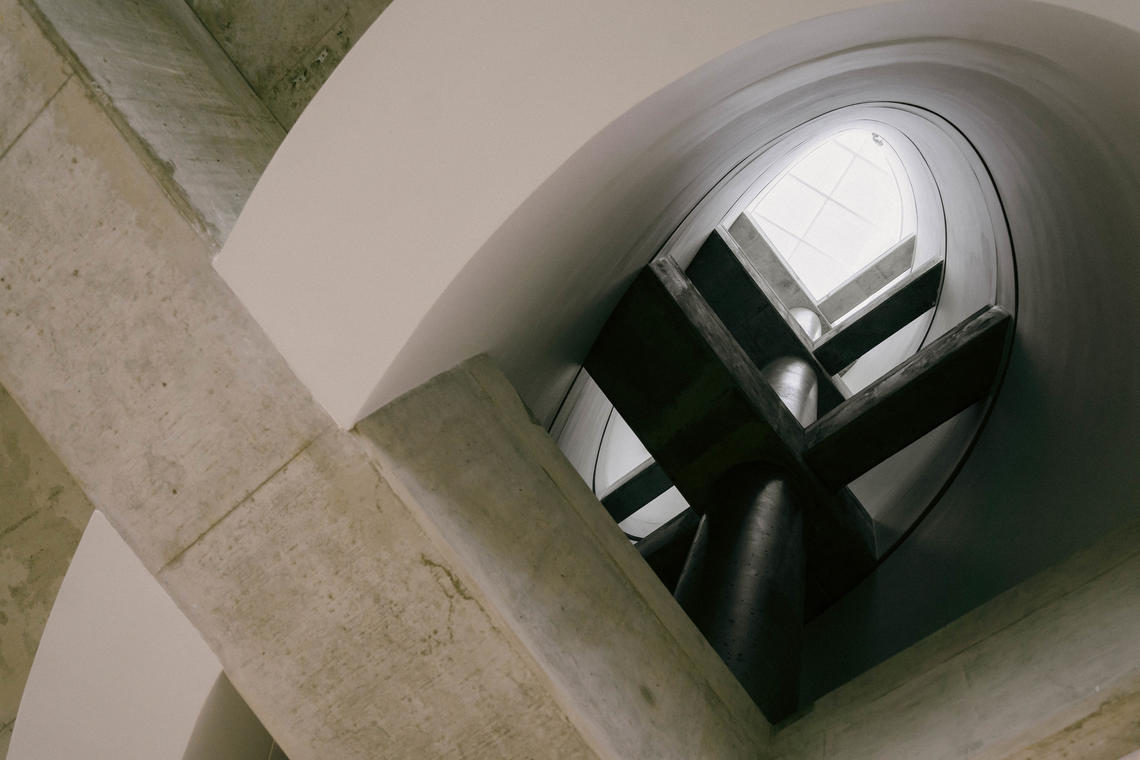Oct. 18, 2022
A national leader in green construction

Neat black squares dot the glass panes of the Hunter Student Commons. More than a subtle architectural detail, they’re a patchwork quilt of vertical solar panels placed precisely where the most sun hits the new complex.
As students flood inside on their way to class or to meet friends, UCalgary is setting the pace in green buildings on Canadian university campuses .
In 2007, UCalgary’s Child Development Centre received the first LEED Platinum certification on a university campus in Canada. Fourteen years later, the MacKimmie Complex — including the Hunter Student Commons — is the first project on a university campus in Canada to be zero-carbon certified for design.
UCalgary now has 15 LEED certified projects with the MacKimmie Complex and the new Mathison Hall on track to receive LEED certification in 2023.
“The Hunter Student Commons and the MacKimmie Tower retrofit provided an opportunity for UCalgary to bring new technologies, design approaches and insights to Alberta, allowing us to foster diversity in our building industry,” says Boris Dragicevic, associate vice-provost (facilities development).
“Globally, buildings, including their materials and operations, represent close to 40 per cent of total global energy-related greenhouse gas emissions," says Joanne Perdue, associate vice-president (sustainability).
“The MacKimmie Complex with the retrofits of the former MacKimmie Tower sets a national precedent that demonstrates that we can retrofit existing buildings to net-zero standards. This is important as building renewal avoids the greenhouse gas emissions and environmental impacts that come with new construction,” she says.

Concrete cylinders called vessels allow warm air to rise between floors as part of natural heating and cooling systems in Hunter Student Commons.
V Strategies
Carbon-neutral campus
UCalgary’s Climate Action Plan sets a bold aspiration to become a carbon-neutral campus by 2050. Designing for net-zero carbon-ready new buildings is an important step to help reach this goal.
The Hunter Student Commons together with the MacKimmie Tower is UCalgary’s first project to be certified for zero-carbon building design, says Dragicevic.
Our next step, now that the complex can be fully occupied, is to work toward net-zero carbon certification for ongoing operations, he explains.
It’s no easy feat to meet the exacting standards set forth by the Canada Green Building Council.
To reach zero-carbon building performance, the project must operate at peak energy efficiency, produce at least five per cent of energy use on-site, and procure the remainder of energy use from green energy sources.
From the use of glass and concrete — designed to allow the sunshine to warm the floors and walls — to the carefully shaped cylinders that allow warm air to rise between floors as a natural heat dispersion system, every design choice was assessed with energy performance and human health in mind.
“The MacKimmie Complex was designed with an aim to be over 85 per cent more energy efficient than the original tower and block — even with being two floors taller,” says Dragicevic.
“While the building is designed for ultra-energy efficiency, it will take time to fine-tune the performance, and our campus community will play a big role in reaching net-zero performance. In highly energy efficient buildings, day-to-day choices that influence energy use make a big difference in performance.”

Vertical solar panels cover the glass of the corner of Hunter Student Commons that is calculated to get the most sunlight each day.
Riley Brandt, University of Calgary
Global perspective
Facilities teams and contractors consulted with some of Europe’s best green building energy engineers, and looked at 15 net-zero-carbon buildings seeking out the latest design innovations.
While some solutions work well in Germany, UCalgary was searching for ideas that could flourish in our Canadian context, says Dragicevic.
On the rooftop of the Hunter Student Commons, steel frames are ready to hold future solar panels, and the double-wall building envelope stands ready to keep winter’s icy blast at bay.
The addition of smart technologies throughout the complex allows for real-time tracking of energy consumption, giving operators critical information to make adjustments to ensure the building operates at peak efficiency.
Lessons learned in the construction of our newest building on campus are meant to inspire designers and builders for generations to come.
“The Hunter Student Commons is a living and breathing example for our civil engineering, architecture and planning students to look to as they learn to shape future construction projects,” says Dragicevic.
Learn more about Hunter Student Commons, including more details on what is included in the building.
About the Institutional Sustainability Strategy
The University of Calgary’s Institutional Sustainability Strategy provides a road map for continuous improvement in our pursuit of excellence and leadership in sustainability. We aim to be a Canadian post-secondary education leader in sustainability in our academic and engagement programs, administrative and operational practices, and through supporting community and industry in their aims for leadership in sustainability. Learn more about UCalgary’s leadership in sustainability.







